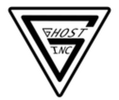Recent Posts
- Home
- GHOST INC BLOG
- firearm training
GHOST INC BLOG
Dry Fire vs. Live Fire: How to Structure an Effective Practice Routine
Posted by on
Every responsible firearm owner understands that practice is essential, but simply sending rounds down range isn't always the most efficient or cost-effective method for improvement. A truly effective routine uses two key methods: dry fire and live fire. Both are crucial, yet they serve distinctly different purposes. Understanding how to integrate them will supercharge your skill development.
The Foundation: Dry Fire Practice
Dry fire is the practice of manipulating and firing an unloaded firearm. It is the single best way to refine technique without the cost, noise, or distraction of live ammunition. It builds muscle memory and focuses on the fundamental mechanics of shooting.
Benefits of Dry Fire:
- Cost-Effective: It is free, allowing for unlimited practice time.
- Focus on Fundamentals: You can isolate skills like grip, sight alignment, trigger control, and drawing without anticipating recoil.
- Convenience: It can be performed safely at home with proper safety protocols.
- Repetition: High repetition is easy to achieve, which is key to ingraining motor skills.
How to Structure a Dry Fire Session:
A good session should be short (10–15 minutes) and focused on one or two specific skills.
- Safety Check: Always, always confirm the firearm is unloaded. Remove all live ammunition from the room.
- The Drill: Focus on maintaining perfect sight alignment through the entire trigger press. Use a coin placed on the slide or muzzle to monitor movement.
- Manipulation: Practice magazine changes, malfunction clearances, and drawing from the holster.
The Confirmation: Live Fire Practice
Live fire is where your dry fire training is validated. It is the only way to introduce the critical elements of recoil management, muzzle blast, and real-world timing. Live fire is a test of your skill, not the place to learn new ones from scratch.
Benefits of Live Fire:
- Recoil Management: It allows you to practice mitigating and recovering from actual recoil.
- Speed and Timing: It gives you immediate feedback on how your speed affects accuracy.
- Equipment Testing: It ensures your firearm and ammunition function reliably.
- Confidence Building: Hitting targets validates your training and builds confidence under real-world conditions.
How to Structure a Live Fire Session:
Focus on applying the techniques you perfected during dry fire.
- Warm-up: Start slowly, shooting for pure accuracy to confirm your sights are zeroed and your dry fire technique is working.
- Performance Drills: Introduce speed and movement. Practice drills that force you to shoot multiple rounds quickly or transition between targets.
- Testing: Run drills under a timer to measure improvement against specific standards.
Integrating Both for Maximum Results
Think of dry fire as the classroom and live fire as the exam. The most effective routine alternates between the two:
- Diagnose (Live Fire): Go to the range and shoot drills to identify a weakness (e.g., poor trigger control).
- Correct (Dry Fire): Spend the next week practicing the specific weakness identified, focusing on perfect form and repetition.
- Validate (Live Fire): Return to the range and shoot the same drills to see if your dry fire practice has resulted in measurable improvement on target.
By treating dry fire as skill development and live fire as skill validation, you will save money on ammunition and see faster, more profound improvements in your shooting performance.
 Loading... Please wait...
Loading... Please wait...
